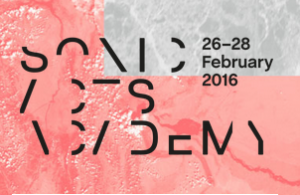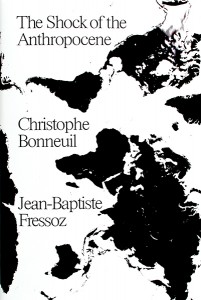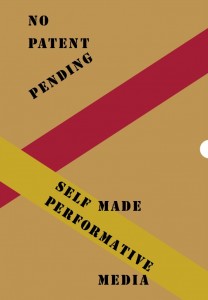Vandaag arriveerde in de post Come si agisce e altri procedimenti en Le avventure della signorina Richmond e Blackout, oftewel deel I en II van de Poesie complete van Nanni Balestrini (uitgegeven door Derive Approdi). In het Italiaans.
Vorige week kocht ik ze in een impuls, nadat ik die paar Nederlandse vertalingen opgespoord had, en de Engelse* en Duitse vertalingen die ik online vond, had gelezen. De Nederlandse vertalingen staan in een Raster uit 1971, en in de Poetry International uitgave Een tak van denken (Tien moderne Italiaanse dichters, Meulenhoff, Amsterdam 1989, vertaling Karel van Eerd). De eerste kocht ik tweedehands, de tweede staat in de OBA.
Ben namelijk gedoken in de Novissimi, de Italiaanse neoavanguardia, de Gruppo63. Balestrini maakte er deel van uit. De afgelopen jaren zijn er een stel Engelse vertalingen van zijn werk verschenen, deels bij Verso: We want Everything, Tristano en The Unseen. Zijn naam duikt sporadisch – maar toch – op in de recente politieke theorie en in tentoonstellingscatalogi. Maar als zijn naam al bekend is buiten Italië, dan meestal omdat hij één van de eersten was die algoritmische computerpoëzie schreef: Tape Mark I (1961). Tot mijn stomme verbazing bleek de korte film (op youtube) over de reconstructie daarvan, inclusief interview met Balestrini, gemaakt te zijn door mijn Marci Panis atelier-buurman Federico Bonelli.
Nu heb ik dus die twee delen poëzie voor me liggen. In het Italiaans. Benieuwd of het me zal lukken om ze te lezen. Ik heb ooit Italiaans gestudeerd, maar switchte naar literatuurwetenschap, en las daarna nog zeer sporadisch Italiaans. (Eerlijk gezegd tot voor kort niet veel meer dan het één en ander over wielrennen…).
De neoavanguardia is een belangrijk moment in de Italiaanse literatuur. De consumptiemaatschappij ontstaat. Grote sociale veranderingen. Het neorealisme is vastgelopen. De novissimi – Giuliani, Pagliarani, Sanguineti, Balestrini, Porta – zoeken vernieuwing (en nieuwe werelden) door taalexperiment. De meeste van hen nemen dat politiek – en dat betekent in die tijd Marxistisch. (Maar discussie met en afwijzing door o.a. Marxist Pasolini en Moravia; Calvino is ook niet heel enthousiast). Utopie. Taalkritiek. Maar ook de invloed van de nieuwe beeldende kunst, de nieuwe muziek (Nono, Berio, Boulez – – Sanguinetti werkt met Berio), en nieuwe ontwikkelingen in de filosofie. Een jonge Umberto Eco werkt bij de RAI en leert daar de componisten kennen die twee verdiepingen hoger in de elektronische studio de toekomst van de muziek uitvinden. Het leidt tot zijn Opera Aperta – nog steeds één van mijn favoriete theorieboeken. Van de Novissimi gaat het naar de neoavanguardia en dan naar Gruppo63.
Dat ik er nu induik is in zekere zin ook het voldoen van een uitstaande schuld aan mijn studie Italiaans. Terugkijkend realiseer ik me dat mijn universitaire ‘opvoeding’ als literatuurwetenschapper begonnen is bij de colleges van Pieter de Meijer. Jarenlang redacteur van Raster. Hij publiceerde niet veel, hij vond van zichzelf dat hij niet goed kon schrijven, en bewonderde de schrijfvaardigheid van anderen daarom des te meer. Via hem leerde ik Eco de semioticus kennen. (Voor zover ik het niet al kende: op de middelbare school had ik de Inleiding in de literatuurwetenschap al doorgelezen, en Roland Barthes ingekeken – ze stonden op de plank in de openbare bibliotheek van Almelo, waar ze overigens indertijd op de studiezaal in de kelder ook gewoon Forum der Letteren hadden staan). De Meijer schreef in 1971 en ook later over de Novissimi voor Raster, en tekende voor wat vertalingen. Dat wist ik – tot voor kort – niet. Hij maakte in 1975 ook een aflevering van het KRO-kunstprogramma Babel over en met Sanguineti, maar daar kan ik niks van terugvinden. Ook niet in de database van Beeld en Geluid.
Umberto Eco was zeer belangrijk voor de neoavanguardia en de Gruppo63. Hij zorgt voor theoretisch kader. De Eco in die tijd is een zeer intrigerende persoon. Eén van de grondleggers van de semiotiek, een semiotiek die zeer beïnvloed is door de cybernetica. Eco had ook McLuhan en de beginnende communicatiewetenschap heel goed gelezen. Dat ikzelf een aantal jaren later zo’n volledig vanzelfsprekende ‘move’ kon maken naar de wereld van de nieuwe media heeft ook veel te maken met die scholing in de semiotiek.
En hoe dieper ik er in duik, des te fascinerender wordt het – waarbij, tot nu toe, naast Eco (logischerwijs, de semioticus), steeds Balestrini het meest bezighoudt. In de eerste plaats om zijn poëzie, de herhalingen, de taalmanipulaties, gedichten uit geleende uitdrukkingen, geen poëzie van een ‘ik’. Balestrini wordt, gek genoeg, daarom soms gezien als de minst poltiek activistische van de Novissimi. (Althans zo beweert Daniele Fioretti, in ‘Utopia and Dystopia in Postwar Italian Literature.’) Terwijl juist dat zijn gedichten voor de huidige lezer heel politiek maakt. (Goed, dat is een punt dat ik verder zou willen onderzoeken).
(Het culturele netwerk is ook interessant. De Novissimi beroepen zich op Pound, Eliot, de futuristen (voor het eerst is dat), maar bijvoorbeeld ook op Charles Olson. Er is een link met Black Mountain College, en via Nono en Berio ook met de opvattingen van John Cage. Balestrini deed ook mee aan Lyotard’s Les Immatériaux).
Balestrini is in zijn poetica en poëzie de meest radicale van het stel. Zijn poëzie is het minst poëzie van een lyrisch subject. Vandaar zijn interesse in elektronische en algoritmische manipulaties. Anderen raken in de (in Italië) tumultueuze jaren ’70 politiek gedesillusioneerd, en keren soms terug naar een meer subjectieve poëzie. Balestrini schrijft juist dan zeer politieke romans. Hij is in 1968 mede-oprichter (met o.a. Toni Negri) van Potere Operaio, en is later (1976) belangrijk voor de autonome beweging (met Bifo Berardi, Paolo Virno). Allemaal politiek activisme ter linkerzijde van de PCI. Net als Negri, Bifo Berardi en honderden anderen wordt hij in 1979 beschuldigd van steun aan terroristische activiteiten (of iets dergelijks), hij vlucht naar Parijs, en wordt later van alle beschuldigingen vrijgesproken. (De geschiedenis van de linkse autonome en arbeidersbeweging is een belangrijk onderwerp van zijn romans).
De combinatie van vormexperiment & taalkritiek en politiek activisme intrigeert. Je vind dat bij wel meer schrijvers uit die tijd (in Nederland bij Vogelaar). Mij bevallen Balestrini’s ‘bewerkingen’ van het taalmateriaal – en ik wil verder uitzoeken waarom dat zo is. Wat weet hij te ‘pakken’?
Toen ik Italiaans studeerde waren er werkcolleges over 20e eeuwse poëzie, die gingen vooral over Ungaretti en Montale. Misschien had ik, als ik indertijd iets beter had opgelet, wel begrepen dat de interesse van De Meijer in narrativiteit in de poëzie niet alleen over Montale ging, maar (juist ook) over Pagliarani, Porta, en over een poëzie die niet is verankerd in een lyrisch ‘ik’. Of misschien was dat ook niet zo…
Anyway – wie weet had ik, als dingen anders waren gelopen, ooit eens iets geschreven over de neoavanguardia. Nu dan.
* Oh nee, ik las nog niet alle Engelse vertalingen. Zie Those Who from afar Look like Flies. An Anthology of Italian Poetry from Pasolini till the present, volume I 1956-1975. 2038pp. Nee, dat is geen tikfout. Meer dan 2000 pagina’s, een slordige 200 gaan over de Novissimi. En ik zie nu dat er eerder dit jaar een Engelse vertaling van Blackout is verschenen bij Commune Editions.



